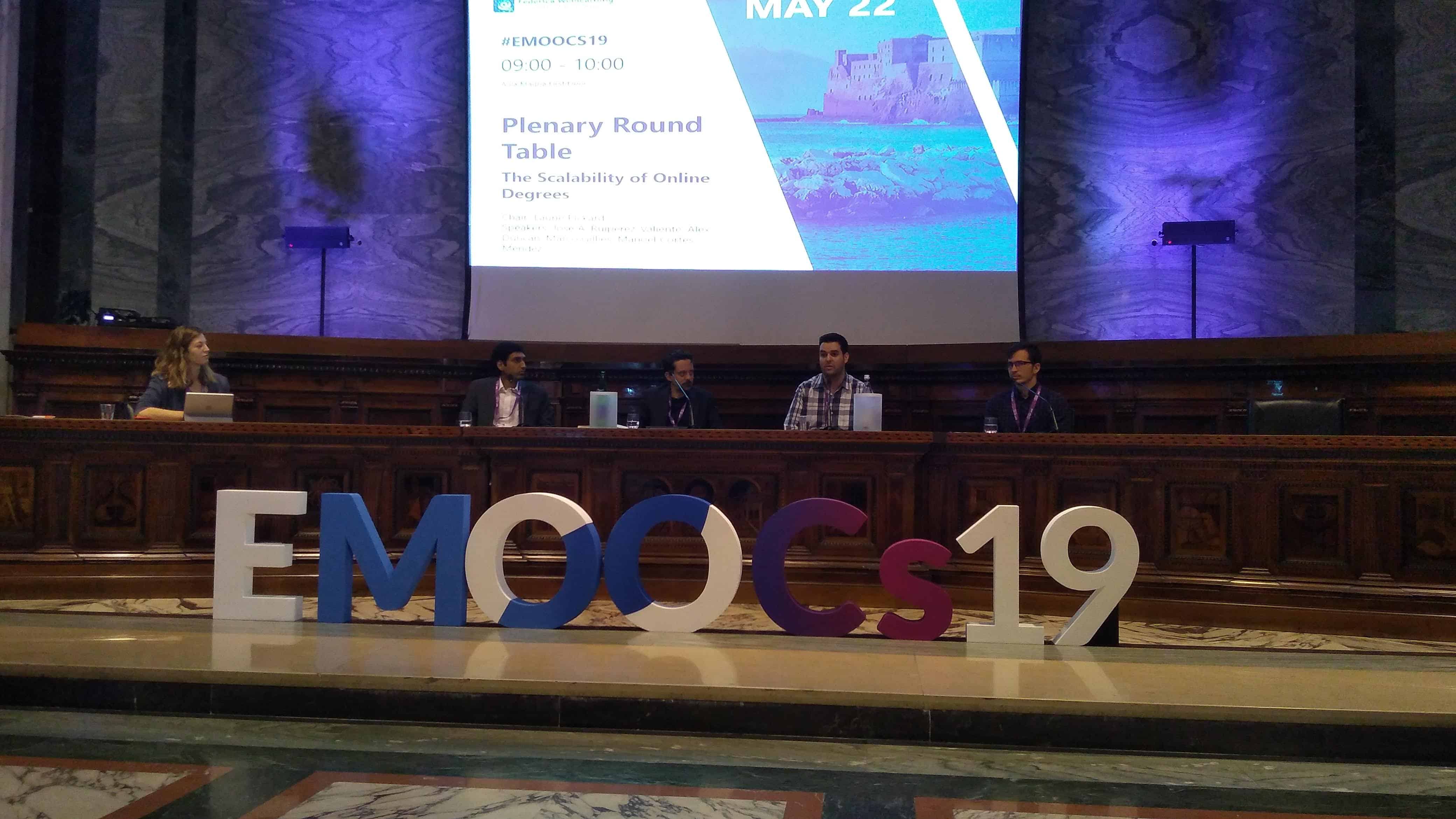4 Takeaways from EMOOCs 2019
A few thoughts on this year’s EMOOCs.
 Some conferences discuss online learning in general, but EMOOCs is one of a select few that focus specifically on MOOCs. Go to several of these conferences, and you start to see some familiar faces. The Class Central team works remotely, so conferences are a chance for us not only to network with others in our industry, but also to catch up with one another.
Some conferences discuss online learning in general, but EMOOCs is one of a select few that focus specifically on MOOCs. Go to several of these conferences, and you start to see some familiar faces. The Class Central team works remotely, so conferences are a chance for us not only to network with others in our industry, but also to catch up with one another.
In the two weeks since we came back from the conference, I’ve been mulling over the conversations with my colleagues, conference sessions, and keynote speeches. Here are a few of my key takeaways.
MOOC platforms converge
The conference featured keynotes from the CEOs of edX and FutureLearn, Anant Agarwal and Simon Nelson respectively, and the Chief Content Officer of Coursera, Dil Sidhu. Sitting in the audience, you couldn’t help but notice the striking similarities among the addresses. (You can find all of the EMOOCs keynotes linked here.) Each speaker framed his remarks by referencing a global education shortage, with many more people in need of education than are currently able to get it. Each one highlighted MOOCs’ ability to meet this demand with flexible, on-demand education, what Anant Agarwal likes to refer to as “modular, omnichannel, lifelong education.”
MOOC platforms have also converged on a common business model, as described in Dhawal Shah’s Six Tiers of MOOC Monetization. With few exceptions, the top three MOOC providers have adopted all of the features of this model, in which free content attracts users, who are monetized with paywalls for course content and certificates, microcredentials, degrees, and corporate subscriptions.
Large scale learning may be coming, but it isn’t here yet
MOOC platforms recognize a global shortage of education and see themselves in a position to fill that gap, with scalable learning that can reach large numbers of people. Class Central assembled a panel (which I moderated) to explore the challenges of achieving scale in MOOC-based education. Georgia Tech is currently managing more than 10,000 students across 3 degree programs. The University of London – Goldsmith’s enrolled about 600 students in the inaugural cohort of its new computer science bachelor’s degree program, six times the number of students they were expecting. These programs are both committed to offering affordable degree programs to as many qualified students as they are able to serve.
MOOC platforms have a vision of scaled online learning. Universities share the desire to educate more people and increase access to education while maintaining quality. However, in practice they are dealing with the difficulties that come with that project. As a result, only a few programs are operating at larger scale and lower prices. These programs are outliers rather than the norm.
Innovation continues, but it may not be visible to all users
For the casual user, MOOCs don’t seem to have changed much overall. They are still constructed as a series of video, text, and quiz modules, along with some peer graded assignments and forum features. This isn’t to say that innovation isn’t happening in the MOOC world. Researchers and course creators are coming up with lots of ways to boost learner experience in individual courses and programs, like the virtual Professor Otto, who engages students in learning games in MOOCs from IFP School.
MOOC makers are also designing courses for the needs of on-campus students, who now can expect to take online and blended courses during their university experience. For degree students, universities also continue to improve the support structure that surrounds MOOC coursework, with professor (or TA) interaction, group projects, networking, virtual simulations, peer feedback, and many other features, most of which are not available to free MOOC users, or even users who enroll in certificate programs.
Moving on from MOOCs?
Personalized learning was a focus of both the opening keynotes and the closing panel. In her keynote Candace Thille, Director of the Stanford Open Learning Initiative, spoke about the value of a learning interface, through which researchers can observe and direct learner behavior. In the closing panel, Carlos Delgado Kloos of the Universidad Carlos III in Madrid made the case that MOOCs will be disrupted by personalized learning. He placed MOOCs in a line of educational technologies, with personalized learning as “education 4.0”.
Already, the term “MOOC” seems a bit quaint. Most MOOCs are no longer massive or open. None of what we call MOOC platforms refer to themselves in those terms. Only the regional platforms (e.g. ThaiMOOC, FUN MOOC) do that. Is it time to move on from MOOCs in favor of the next thing?
Tags






